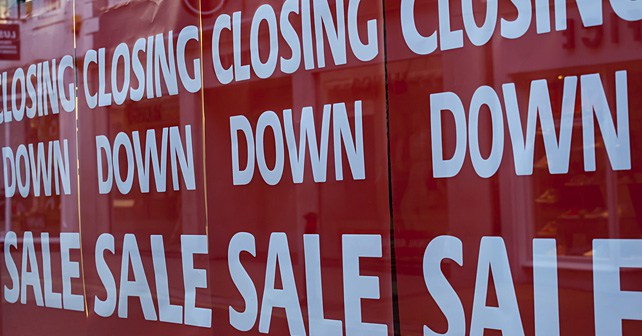By glancing at the raft of recent headlines about distressed or bankrupt retailers; you’d be forgiven for thinking we’re in the midst of a retail apocalypse. Taking a deep dive into the data, our analysts came to a slightly different conclusion however. Creditsafe USA recently released this whitepaper to deliver the full picture. If you haven’t already, we’d love you to review our data-driven insights.
So what happened, what’s happening, and what will happen? Read on…
Creative Destruction
The advent of the World Wide Web ushered in radical changes in how we communicate, access information, and shop. While immeasurably improving lives, the internet revolution has not been without casualties—not the least of which occurring in the retail sector.
With the speed of technological advances and the evolving nature of commerce, online companies—like Amazon, Overstock, and Wayfair—experienced meteoric and sustained growth trajectories whereas legacy brick and mortar retailers saw sales slump and foot traffic dwindle. Some—Sears, Kmart, JC Penney, and Macy’s—continue to shutter some stores in an attempt to consolidate. Using a more drastic approach, it’s reported that distressed retailers such as The Limited and Bebe may close all their physical locations in an attempt to turn themselves around as exclusively online retailers.
The Domino Effect?
Waves of large retailers declaring bankruptcy—Circuit City, Sports Authority, Gander Mountain, and HH Gregg to name a few—seem to be dominating the headlines lately, and with good cause; bankruptcy has many negative downstream ramifications, chiefly among them:
Economic losses: retail is the 3rd largest US industry as a percentage of GDP
Job losses: the retail sector employs nearly 10% of the national workforce
For example, since Sports Authority declared bankruptcy suppliers like Under Armor are still trying to recover from the negative blow to their business. Add this to the loss of sales and property taxes to the local economy and the impact of former employees added to the unemployment roll, and you can easily see the major influence the retail sector wields in overall US economic health. In the case of Under Armor, they are strong enough to absorb the impact, however many smaller companies are not.
The Correction
The reality facing stores today is that shoppers have far more choice than ever, and capturing their business requires a vastly different approach. The untold—or overlooked—story is that many segments of the retail sector are thriving.
As distressing as it is to hear long favored retailers declaring or teetering on the edge of bankruptcy, history shows they will either recover or newer, more agile brands will rise to take their place.
Whenever there is a seismic sea change, there is always a period of evolution and adaptation before a new normal emerges. During these uncertain transition periods, it is vital for businesses to have high quality commercial credit information available at their fingertips.
Creditsafe USA—the Global Business Intelligence Experts—provides you with crucial business credit information enabling better business decisions. With over 100,000 customers worldwide and information on over 240 million businesses, Creditsafe offers you coverage you can count on.
By  April 11, 2017


Recent Comments